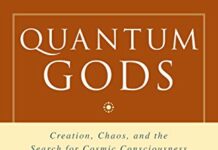
Ebook Info
- Published: 1988
- Number of pages: 202 pages
- Format: PDF
- File Size: 2.21 MB
- Authors: Victor J. Stenger
Description
Much of the world seems chaotic and unpredictable, but the regular movement of celestial bodies and certain demonstrable physical phenomena seem to indicate the existence of a world that is basically orderly. This orderliness is often taken as evidence for an intelligence beyond our experience – a “creator” responsible for the first moment in time and all ensuing infinite patterns of the universe. Yet the science of the origin of the universe is still highly speculative and incomplete. How did the universe begin? According to Professor Victor J. Stenger, the simplest hypothesis so far is that it began by accident.Stenger insists that the existence of order does not necessarily imply that it is the result of design. Nothing currently known about the universe, he writes, requires that its structure was somehow imposed upon it from the outside. The universe is complex, but the laws of nature are simple; in fact, the universe may have originated because of a series of spontaneous random events.The book begins with a discussion of the meaning of order and examples of orderly patterns generated by chance. (Play enough poker hands, Stenger writes, and one day you will be dealt four aces.) Subsequent chapters introduce readers to the unique perspective of the universe provided by physics, with historical and philosophical material intertwined with a systematic but nontechnical presentation of basic physics. This leads to a description of the basic structure of the universe and the way in which symmetries of space, time, and inner dimensions account for the “laws” obeyed by particles.The origin of the universe is then described as a chance event, with space, time, matter, and the laws of nature the result of a spontaneous process of symmetry-breaking. Focusing on the question of planned versus unplanned origin, Stenger shows that the issue is not philosophical but scientific and that order can and does happen every day – by chance.
User’s Reviews
Editorial Reviews: Review “An important thesis . . . provocative . . . intriguing.” – Nature About the Author Victor J. Stenger (1935 – 2014) was an adjunct professor of philosophy at the University of Colorado and emeritus professor of physics and astronomy at the University of Hawaii. He was the author of the New York Times bestseller God: The Failed Hypothesis, God and the Atom, God and the Folly of Faith, The Comprehensible Cosmos, and many other books.
Reviews from Amazon users which were colected at the time this book was published on the website:
⭐Victor John Stenger (born 1935) is an American particle physicist, philosopher, author, and religious skeptic; he is also a regular featured science columnist for the Huffington Post. He has written many other books, such as
⭐,
⭐,
⭐,
⭐,
⭐, etc.He wrote in the Preface to this 1988 book, “In our own culture, dominated as it is by Judeo-Christian thought, most people normally take as evident that the universe began as the result of some creative act… The very order of the universe was seen to imply a grand design. the natural laws responsible for that design must have been laid down by some lawgiver. That lawgiver was God. MOdern science has even been called on to testify to the validity of the notion of creation… In a papal encyclical in 1951, Pope Pius XII took [the Big Bang] as evidence for a Creator… In this book, this certainty is challenged. Nothing in our current scientific understanding of the universe, including the Big Bang, demands that it begin with a purposeful creation. The fact that the universe had a beginning, and is not static but has evolved to its present state, does not necessarily imply a grand design. On the contrary developments in physics and cosmology … are leading us to a starting conclusion: The universe, including its current orderly state, can have appeared spontaneously out of nothingness.” (Pg. 8)He adds, “My claim is not that the absence of a creative force has been, in any sense, ‘proven’ but rather that what we now know about nature does not, as many people believe, require either a creation or a Creator. The simplest hypothesis that so far seems to explain the data is that the universe is an accident.” (Pg. 11-12)He states, “I argued that order can occur by chance; that no agent is necessary to produce order, although such agents do exist. When we look at the universe as a whole, however, it appears that NO AGENT WAS POSSIBLE since the universe began in total chaos. The presence of the words on this page, however, shows that order now exists, so let us proceed to see what may have happened when a black hole… exploded to produce the universe.” (Pg. 159)He argues, “Once we assume there is a grand design, the disorganized reality we see around us becomes almost impossible to explain, unless it too is part of the plan… The misery, disorder, and injustice of the world are dismissed as mysteries our minds are incapabel of comprehending. However, if we do not assume the existence of a Creator right from the start—as unquestioned, self-evident truth—then the disorder in the world can much more reasonably be seen as evidence for lack of plan rather than for one purposefully hidden from our view.” (Pg. 179-180)He summarizes, “In this book I have tried to describe what is beginning to develop as science’s view of an accidental, unplanned origin of the universe. In doing away with the notion of a Creator, we fly in the face of some of the most sacred beliefs fo the world’s great religions… believers might argue that they have the proof of venerability on their side. After all, how could so many great thinkers over so many centuries be wrong? But recall that these same thinkers also believed that the sun revolved around the earth, and theie belief did not make it so.” (Pg. 180)He concludes, “The universe COULD have happened by accident, and arbitrary natural laws COULD result from the accidental way the original lawless symmetries were broken as our particular universe expanded and cooled during the first fraction of a second of its existence.” (Pg. 181)This was Stenger’s first book, and has since been surpassed in detail by his later books. But it shows the original path that his thought took, and one can follow the further development in his more recent books.
⭐I thought the book was well-written and clearly presents Dr. Stenger’s hypothesis for the origin of our universe. Although I am a Ph.D. scientist (organic chemistry), I am not that well versed in the inticate details of physics and may not fully appreciate his proposal because of my lack of expertise in his area of competence. However, it seems to me that he has a gap in his rationale. For example, in chapter 9, page 158, he states that “this single-particle universe would have been a black hole with a radius of 10 to the -33rd power centimeter, and the Big Bang may be viewed as the Hawking disintegration of this black hole.” However, if the particle is at maximum entropy, what force or energy would cause disintegration? Similarly, he states that “the universe at the Planck Time nevertheless must have been in complete choas!”, again raising the concern about how complete choas could have proceeded spontaneously to the Big Bang or anything. Also, on page 173, in a summary statement of his hypothesis, he writes that “It (a void) was as much nothing as nothing can be” and then, mysteriosly to me, “A fluctuation in that void then occurred, generating our universe…”. One wonders how a “fluctuation” can occur in a void. It appears to me that he has magicallly invoked an independent energy source as his mechanism of action, returning to a cause and effect process that is proposed in typical space-time theorems.
⭐I have been a fan of Stenger for a while now and this book is great. It is lucid, entertaining, and strikes at the core of fine-tuning. It almost reminds me of an odd combination of Dawkin’s enthusiasm with Sagan’s massive insight into the workings of space.Highly recommended for anyone who is a fan of Sagan, Asimov, Krauss, Tyson, or any of the new atheists.
⭐Explains clearly and sensibly the way the universe was not by design and without guidance.
Keywords
Free Download Not by Design in PDF format
Not by Design PDF Free Download
Download Not by Design 1988 PDF Free
Not by Design 1988 PDF Free Download
Download Not by Design PDF
Free Download Ebook Not by Design



